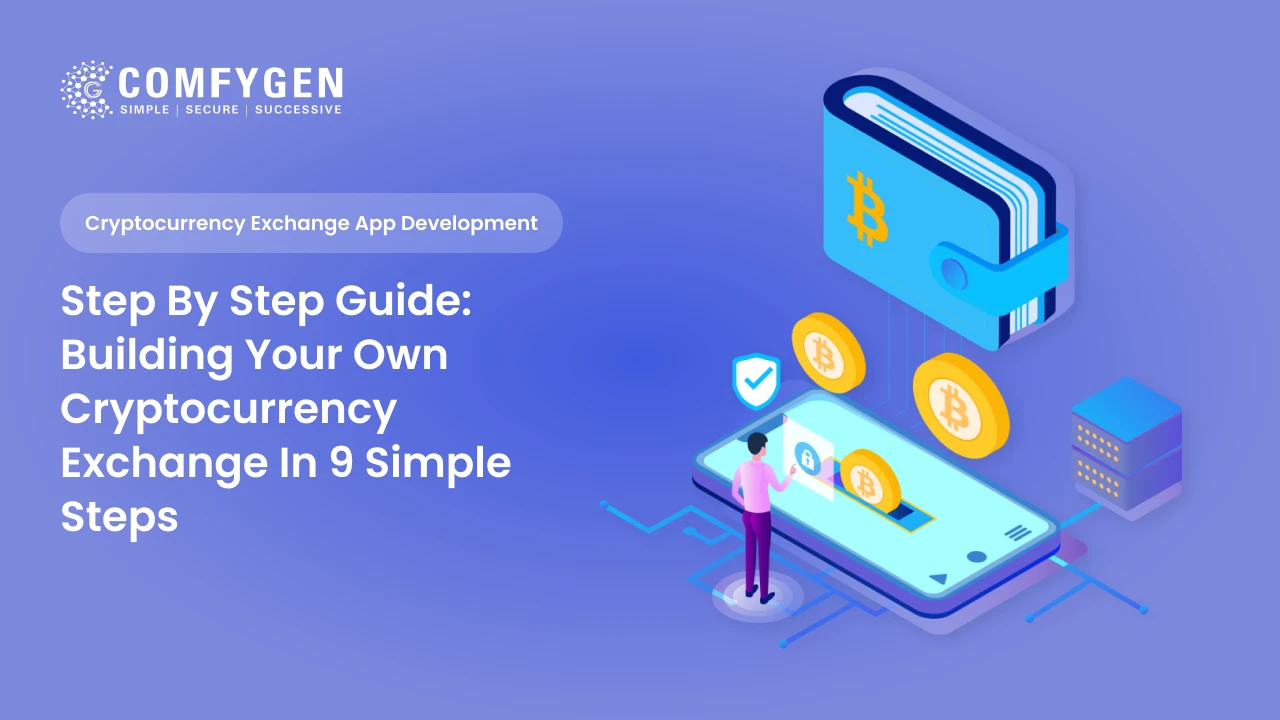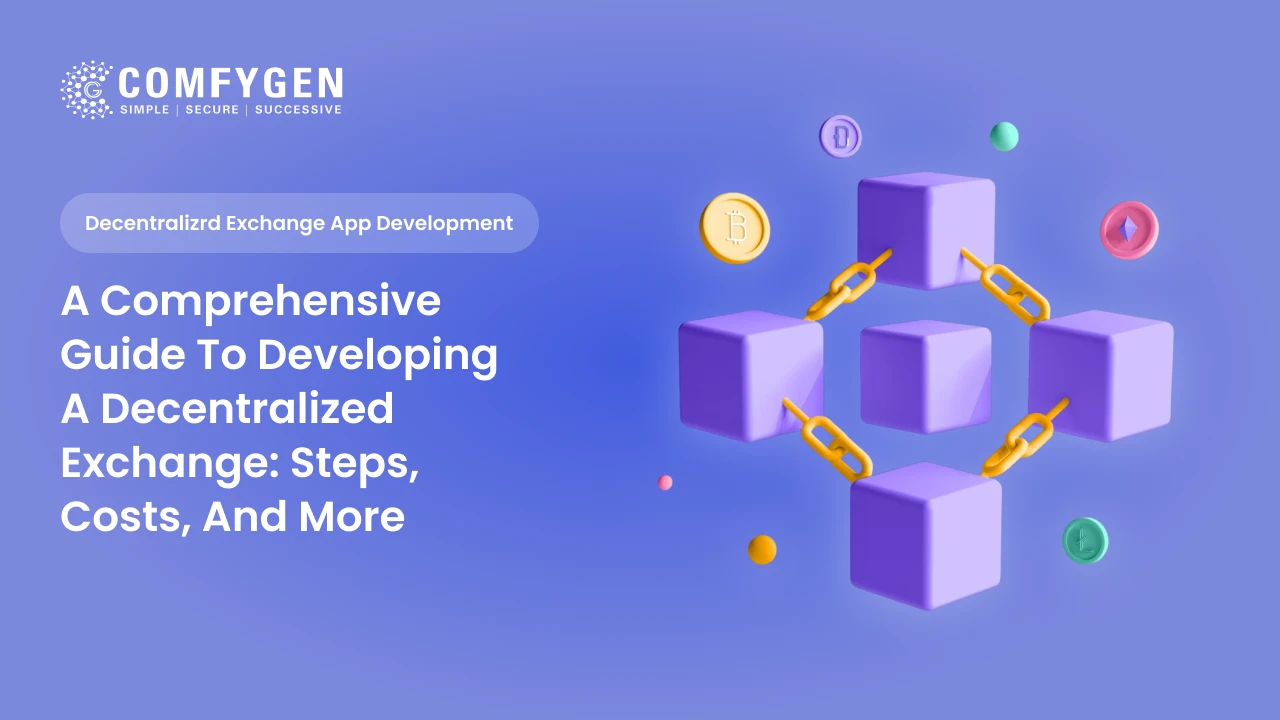Step By Step Guide: Building Your Own Cryptocurrency Exchange In 9 Steps
The world of cryptocurrencies continues to grow, and at the center of this digital financial revolution are cryptocurrency exchanges. These platforms enable people to trade digital currencies like Bitcoin, Ethereum, and many others, providing the infrastructure for cryptocurrency adoption. But what exactly is a cryptocurrency exchange, how does it work, and how can you build one?
In this ultimate guide, we’ll answer all of these questions and more. Whether you’re a beginner just getting into crypto trading or a business looking to develop a cryptocurrency exchange platform, you’ll find everything you need to know right here.
What is a Cryptocurrency Exchange?
A cryptocurrency exchange is an online platform that facilitates the buying, selling, and trading of digital currencies. These platforms act as intermediaries between buyers and sellers, enabling the exchange of traditional fiat currency (like USD, EUR, or INR) for cryptocurrencies such as Bitcoin (BTC), Ethereum (ETH), and hundreds of altcoins.
In simple terms, a cryptocurrency exchange functions similarly to a traditional stock exchange but for cryptocurrencies. Users can trade digital assets, invest in new coins, or simply exchange one type of crypto for another.
Some key aspects of cryptocurrency exchanges include:
- Marketplaces where crypto buyers and sellers meet.
- Price discovery through the supply and demand dynamics.
- Tools and resources for traders to manage their portfolios and analyze market trends.
How Does a Cryptocurrency Exchange Work?
While cryptocurrency exchanges vary in design and functionality, the general workflow remains similar across platforms. Here’s a detailed breakdown of how these exchanges operate:
- User Registration: To start trading, users need to create an account on the exchange platform. This typically involves providing basic personal information, agreeing to terms of service, and completing Know Your Customer (KYC) procedures for security and compliance.
- Deposit Funds: After registering, users deposit funds into their exchange accounts. This can be done through bank transfers or by transferring cryptocurrency from an external wallet.
- Placing Orders: Once funds are deposited, users can place buy or sell orders. These orders are typically categorized into:
- Market Orders: Immediate execution at the current market price.
- Limit Orders: Orders set at a specific price, executed when the market hits that price.
- Stop Orders: A type of order used to limit losses or secure profits.
- Matching Orders: The trading engine of the exchange matches buy and sell orders based on price and time priority. In a centralized exchange (CEX), this process is handled by the exchange platform, whereas in a decentralized exchange (DEX), it’s facilitated by smart contracts.
- Transaction Execution: Once an order is matched, the exchange executes the transaction. The buyer receives the cryptocurrency, and the seller receives the agreed-upon currency.
- Withdrawal: After completing trades, users can withdraw their funds to a private wallet or bank account. Depending on the platform, withdrawal fees and processing times may vary.
Types of Cryptocurrency Exchanges
Understanding the different types of cryptocurrency exchanges is crucial in selecting the right platform or designing one for your business needs. Here are the three primary types of exchanges:
1. Centralized Exchanges (CEX)
A centralized exchange is a platform operated by a centralized authority (typically a company) that manages user funds and handles trading operations. These exchanges are the most commonly used in the crypto space and offer high liquidity, quick transactions, and user support.
- Examples: Binance, Coinbase, Kraken, Bitfinex
- How it Works: CEXs manage users’ funds and act as intermediaries between buyers and sellers. Users do not own their private keys, which means they rely on the exchange to safeguard their assets.
- Pros:
- High liquidity, leads to faster transactions.
- Customer support and dispute resolution.
- User-friendly interface for beginners.
- Cons:
- Risk of hacks and security breaches (since exchanges hold users’ funds).
- Centralized control, meaning the platform has the authority to freeze or restrict accounts.
2. Decentralized Exchanges (DEX)
A decentralized exchange operates without a central authority and allows peer-to-peer crypto trading directly on the blockchain. DEXs rely on smart contracts to facilitate transactions between users, offering more privacy and control over funds.
- Examples: Uniswap, PancakeSwap, SushiSwap
- How it Works: Users connect their wallets directly to the DEX and execute trades without the need for an intermediary. These platforms are built on blockchain networks like Ethereum and Binance Smart Chain (BSC).
- Pros:
- Greater privacy and control over your funds.
- Lower fees due to the lack of intermediaries.
- More accessible globally, with no regulatory control.
- Cons:
- Lower liquidity compared to centralized platforms.
- Slower trade execution.
- A steep learning curve for beginners.
3. Hybrid Exchanges
A hybrid exchange combines elements from both centralized and decentralized exchanges, aiming to provide the benefits of both while minimizing the drawbacks. Hybrid platforms offer decentralized order matching but retain centralized fund management.
- Examples: Deversifi, Nash, and others
- How it Works: The exchange integrates the security of a decentralized platform with the user experience and liquidity of a centralized one.
- Pros:
- Higher liquidity than DEXs.
- More control for users than CEXs.
- Secure and faster transactions.
- Cons:
- More complex architecture.
- Regulatory hurdles due to the mixed nature.
How Do Cryptocurrency Exchanges Make Money?
Cryptocurrency exchanges generate revenue through various channels. Here are the primary ways they earn:
- Trading Fees: Every time a user buys or sells crypto on the platform, the exchange charges a small fee, typically a percentage of the transaction value. These fees can be either maker or taker fees.
- Listing Fees: Exchanges often charge crypto projects a fee to list new tokens or coins on the platform. These fees vary depending on the popularity and demand for the token.
- Withdrawal Fees: Most exchanges charge a fee when users withdraw their funds from the platform, either in cryptocurrency or fiat. These fees often cover transaction costs.
- Margin Trading & Lending: Some exchanges allow margin trading and offer crypto lending services, where users can lend their digital assets for interest.
- Staking & Yield Farming: Some exchanges offer staking and yield farming.
- Advertising and Sponsorships: Popular exchanges can generate revenue through advertisements displayed within the platform or by partnering with other businesses in the crypto space.
Let’s Talk About Your
Crypto Exchange Idea
Contact Now
Are Cryptocurrency Exchanges Secure?
Security is a critical concern in cryptocurrency exchanges, as they hold large amounts of digital assets and sensitive data. Top exchanges implement several measures to safeguard their platforms and users:
- Cold Storage: Most exchanges store the majority of user funds in offline wallets to protect them from hacking.
- Two-Factor Authentication (2FA): 2FA adds an extra layer of protection by requiring users to verify their identity through a second method, like a mobile app or email code.
- Encryption Protocols: All sensitive data, including user information and transaction details, is encrypted to protect it from unauthorized access.
- Security Audits: Leading platforms conduct regular security audits and penetration tests to identify and fix vulnerabilities.
- DDoS Protection: Distributed Denial of Service (DDoS) attacks can bring down platforms. Exchanges implement anti-DDoS measures to ensure uptime.
Top Cryptocurrency Exchanges in 2025
With the increasing popularity of cryptocurrencies, many exchanges have emerged to offer different trading experiences. Some of the most notable ones in 2025 include:
| Exchange | Founded | Key Features |
|---|---|---|
| Binance | 2017 | High liquidity, global presence, wide crypto selection |
| Coinbase | 2012 | User-friendly, regulatory compliant |
| Kraken | 2011 | Advanced tools, staking options |
| KuCoin | 2017 | Supports a wide range of altcoins |
| Bitfinex | 2012 | Margin trading, institutional-grade support |
Want to Build Your Own Cryptocurrency Exchange?
The demand for crypto exchanges is growing, and entrepreneurs are rushing to create their platforms. If you’re thinking about developing a cryptocurrency exchange, it’s essential to understand the technical, regulatory, and business aspects involved.
At Comfygen, we specialize in providing custom cryptocurrency exchange development solutions. We offer:
- Centralized, Decentralized, and Hybrid Exchange Development
- Trading Engine Integration
- Wallet Development & Integration
- Liquidity Solutions
- AML/KYC Compliance Solutions
- Custom User Interface & Experience (UI/UX)
- Security Features and Smart Contract Audit
- P2P Crypto Exchange Development
Why Choose Comfygen for Cryptocurrency Exchange Development?
Comfygen has extensive experience in blockchain development and has successfully helped clients build secure, scalable, and feature-rich cryptocurrency exchanges.
We understand that building a cryptocurrency exchange requires a blend of technical expertise, regulatory compliance, and security measures. Our team of experts is ready to turn your vision into a high-performing exchange that will stand out in the market.
Conclusion
Cryptocurrency exchanges are the backbone of the crypto world, enabling traders to buy, sell, and trade digital assets. Whether you’re an investor or looking to build your platform, it’s crucial to understand the inner workings of these exchanges.

Mr. Saddam Husen, (CTO)
Mr. Saddam Husen, CTO at Comfygen, is a renowned Blockchain expert and IT consultant with extensive experience in blockchain development, crypto wallets, DeFi, ICOs, and smart contracts. Passionate about digital transformation, he helps businesses harness blockchain technology’s potential, driving innovation and enhancing IT infrastructure for global success.









